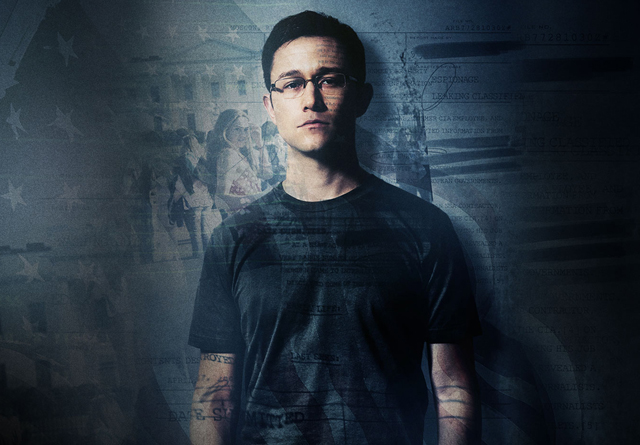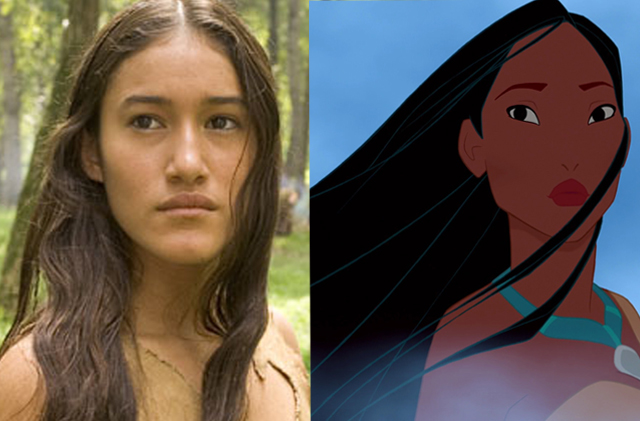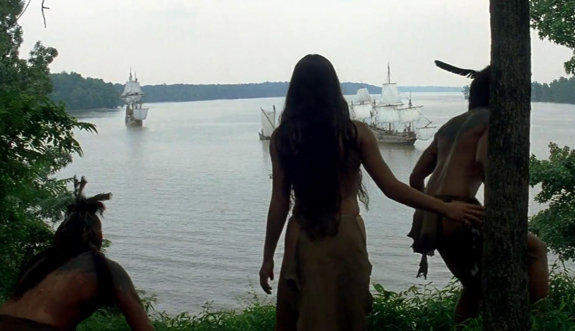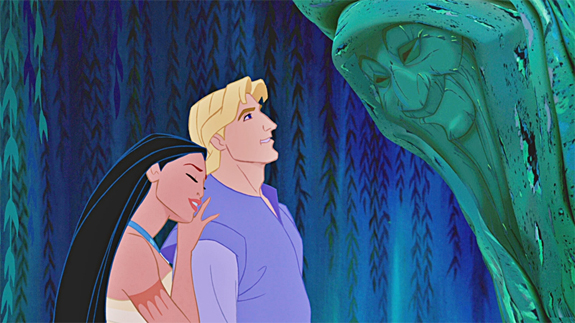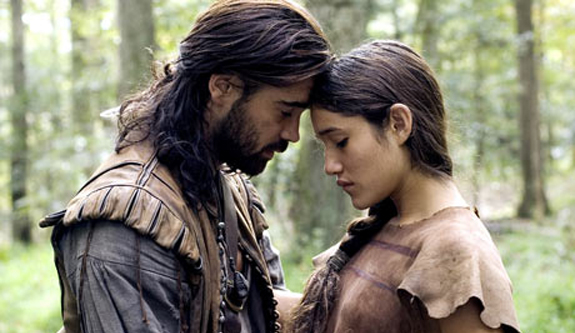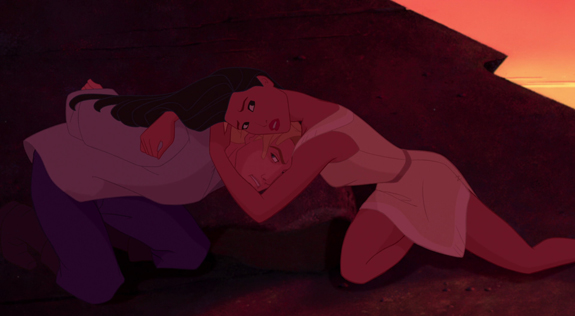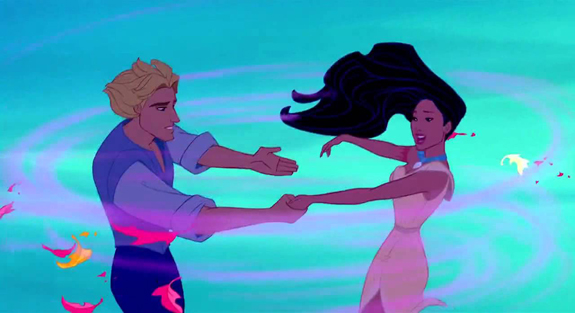
Cinematography can create many eye catching images that immediately stick out in the mind of the viewer. Sometimes it’s with simple framing, or some kind of optical trick, or even some bold choices of color. Oftentimes, it’s the shot that doesn’t call attention to itself right away that ends up sticking in our minds, because of the precision of it’s execution. But, as we’ve seen over the years, to become a successful cinematographer in Hollywood, you have to be someone who knows all the minute details of the tools of their trade. If a film is poorly shot, it will affect the movie even more than poor writing and weak performances. The cinematographer must understand everything about how the camera works, and understand the best way to use it for dramatic purposes. That’s why they are such a valued member of the crew and are often the ones who work more closely with the director than anyone else. Some even go on to be directors themselves, like Haskell Wexler (Medium Cool), Barry Sonnenfeld (Men in Black), Jan de Bont (Speed), and Nicolas Roeg (The Man Whod Fell to Earth). But, one tool of the trade that carries it’s own significance across a broad spectrum of different styles and stories that many of the best cinematographers do love but seem to seldom use is black and white photography. Once the dominant form of film in the early days of cinema, the practice of shooting a movie in black and white has become somewhat of a rarity, and yet it still persists and is admired to this day despite the change in the market. In a time when color film is the standard, how does black and white photography still hold up today?
The biggest misconception that’s made about black and white photography is that it’s easy to do and that’s why you rarely see it valued by Hollywood elite; because it’s thought to cheapen the overall product. While it is true that black and white photography is easier and less expensive to process, it is by no means easier to shoot. In fact, because of the lack of color, many cinematographers and directors have to take into more account how they are going to light a scene, as well as know how they are going work with their designs. Cinematic shortcuts that are commonplace in color films like thematic color coding and high key lighting are not as readily available to a film shot in black and white. The Director of Photography or DP (aka the cinematographer) needs to work around these shortcomings in order to deliver the same kind of storytelling that a color film will give you and this is a challenge that many DP’s embrace with pleasure. It takes a knowing mind to figure out how to suggest color in a scene when their is none, and which ever filter they run the film through can offer some interesting visual surprises as a result. The way a scene is lit also becomes a much more important tool, since contrasts between light and dark become much more delineated in the two tone process. Because of the advancement of color, the black and white process has indeed gone through it’s own evolution into a different kind of storytelling tool, and one that is used much more carefully by filmmakers today than it had in the past. That’s probably why it’s a seldom used but cherished art-form today; because it’s something that immediately stands out in the market and is also held to a different standard than everything else. And for something that’s held to different standards, it’s uses and misuses are caught more acutely by the general audience.
Looking back at film history, we can see how competition in the market spurred a different kind of classification for the use of black and white photography. For years, the only way to make a movie in early Hollywood was in black and white. Kodak wouldn’t develop the first color kodachrome film for the public market until 1935, and the process took even longer to take hold in Hollywood. Different attempts to bring color into cinema included dyeing film stock like what D.W. Griffith did for the different segments of his epic Intolerance (1916), or painting directly onto the film itself like Georges Melies had done with his early shorts. Sephia tone was the most commonly practiced form of coloring for silent films and even today, it’s a commonly parodied form of coloring to make a movie appear old-fashioned. But for the most part, most movies had to work with shades of gray and little else for decades. That was until the Technicolor company developed it’s first three strip process which for the first time true color was successfully recreated on film. The Walt Disney Company was the first to jump on the new process and they were given exclusive rights to the process for nearly 5 years, using the process to give bright color to their Mickey Mouse and Silly Symphony shorts. Because of Disney’s success with the three strip process, Hollywood was convinced that they needed to begin using Technicolor film on a much larger scale. The year of 1939 became a monumental year for this change as audiences were treated to a triple whammy of color blockbusters with The Adventures of Robin Hood, The Wizard of Oz, and the Oscar-winning Gone With the Wind all released that year. Because of those movies, color photography had taken it’s place in Hollywood, but for a while it would have to share theater screens with black and white.
Black and white films still dominated for a few decades more, mainly because of the higher cost for color film. The wartime rationing also played a role in keeping color film to a minimum, and for a while, Hollywood would treat color photography as a special storytelling licence used only on special occasions. The advent of television, which was also limited in it’s ability to display true color, helped black and white film to survive even longer, since there would be little change from one format to the other. But, as color processing became more prevalent, and as a result cheaper and more available to the public, color cinema began to quietly take over the industry, and by the late 70’s and early 80’s, black and white films were almost non existent. It never went away fully, but instead sort of switched places with color as a process that was no longer the standard, but instead an exception; used solely for the purposes of style and story. Hollywood blockbusters in particular stayed away from black and white photography, because it was believed that in the public’s eye, the process was viewed as old-fashioned. That would change though in the early 90’s, with the growth of the indie film market. Many independent filmmakers saw the value in black and white photography because they felt it gave a grittier, more documentary look to their films. Because a black and white movie is more eye-catching in a world dominated by color, shooting your low budget movie in the format could help get it noticed, and that’s what spurred a new revival in the process. With films by Gus Van Sant (Mala Noche), Jim Jarmusch (Coffee and Cigarettes) and Kevin Smith (Clerks) all getting recognition with the process, it was time for Hollywood to take notice again.
And this leads to an interesting era in Hollywood that we find ourselves in today, where black and white photography has a mystique around it that it hadn’t had in the early part of it’s history. If a filmmaker uses black and white for a movie today, it’s not because it’s required of them like it was back in the old days, but because it is necessary for the story that they want to tell. I especially find it interesting when a director suddenly shifts their style to work in black and white as opposed to color which they normally work with. In some ways, their style stays the same no matter what the format, but their black and white feature will still stand out. Tim Burton has made only two features in black and white, Ed Wood (1994) and Frankenweenie (2012), and while very different, they do affect the director’s body of work in some way. With Ed Wood, the normally bombastic visual artist subdued his style to make a more down-to-earth biopic, and the black and white photography did an effective job of conveying that while still feeling true to the director’s style. And Frankenweenie stands out as one of the rare black and white animated features, another oddity that fits within the director’s body of work. Mostly, high profile directors look to the process as a way of underlying a darker, more somber tone to their movies. Steven Spielberg used it to profound effect in Schindler’s List (1993), giving the movie an immediacy and visceral effect that I don’t think it would’ve had in color. And Martin Scorsese memorably shot his classic Raging Bull (1980) in black and white, giving the biopic of boxer Jake LaMotta a very stripped down and naked feel to it, fitting the tone perfectly. But, even still, these directors don’t rely on black and white always. It’s only used when it’s absolutely essential for the movie they’re making. Black and white wouldn’t work well for something like E.T.: The Extra Terrestrial (1982) or The Wolf of Wall Street (2013) for instance. Accomplished filmmakers know the proper uses of black and white cinema, and that’s something that could be misused by an unskilled amateur.
Black and white is misused sometimes, and it more or less has to do with how black and white has evolved into a more prestigious trade tool. There’s a misconception today that filming in black and white will automatically make your movie feel grittier and cinematically deeper than it really is. It’s become a crutch for the pretentious wannabe director, who tries to cover up his or her cinematic shortcomings by making their movie more monochromatic. The only problem is that doing so doesn’t hide the other problems like script, acting, and/or direction and this kind of audience manipulation is often too easy to spot. In an age today where switching between color and black and white is as easy as a push of a button on your keyboard, or a filter on your phone, people too often take this change for granted. To make black and white look good, it takes an expert eye to understand how the image will come out when the color is removed. That’s why when a movie shoots in black and white, it must be carefully constructed by the cinematographer. Their input is the most important from movie to movie and they make all the difference when it comes to black and white. Take two examples for instance from the body of work of Woody Allen; Manhattan (1979) and Celebrity (1998). Manhattan is heralded as one of the director’s best and it’s stunning widescreen black and white cinematography is part of that. And then there’s Celebrity, a later less heralded feature also shot in black and white, made during Allen’s off years. So, why is one more celebrated than the other. Part of it is because black and white is cinematically more essential to the story of Manhattan, whereas it’s an afterthought in Celebrity. Manhattan (shot by Gordon Willis) was meant to evoke a sense of nostalgia, and that’s why the black and white imagery stood out, because it was evocative of old photographs of New York City from the pre-War years. Celebrity (shot by Sven Nykvist) just uses it to give the movie a more gritty look, and as a result, it feels more cliched. It just shows that even with the same filmmaker, the process can be misused depending on the film.
But, depending on how a director uses it, it does affect the overall story. One thing that I am pleased has developed in the last couple decades regarding black and white photography is the value that audiences put into it. Remember the outcry that audiences made when studio and broadcast executives like Ted Turner began to “colorize” old black and white movies. It’s unheard of today, but some believed that in order for old films to be accepted by modern audiences, they had to have color added to them. It didn’t matter that a movie could hold up well because of how it was performed or directed. Because they were in black and white, people at the time purely thought that without the color, these movies were worthless. Thankfully, the process was short-lived and audiences accepted the old black and white movies as they were originally intended to look. But this gets into an interesting aspect of filmmaker intent and how that contrasts with audience reception, and how often the studios tend to misread both. There have been different attempts by some filmmakers to try to bring more black and white films to the forefront, only to end up compromising later on by switching to color. Filmmaker Frank Darabont, the man behind The Shawshank Redemption (1994) has tried to be a champion of the black and white process, often producing two different versions of his movies in the editing process; one in color and the other in black and white. He released two version of his film The Mist (2007) on home video, and left it up to viewer to prefer which one they wanted to watch. He also did the same for the pilot episode of The Walking Dead series that he also produced and directed. It’s an interesting experiment that I’m glad Darabont is putting out there for us to decide, but it seems unfair that he has to work outside the studio standards in order to achieve this, and not in the cinemas like it’s supposed to.
Black and White continues to hold a special place in the film-making world, but I often feel that it’s value is somewhat underestimated. Like all great art, black and white photography requires expertise and it can often be misused or misunderstood. Sometimes I’ve found that some movies could’ve been better served by using the process. In my own personal experience, I can recall one time when I was watching Martin Scorsese’s forgotten 1999 film Bringing Out the Dead, and it was all in black and white. Despite the film’s shortcomings, I was finding the cinematography interesting because of the stark contrasts in lighting, and it actually enhanced the experience for me. But then I realized that my TV had accidentally had it’s color settings turned all the way down, so I was in fact watching a color film that was mistakenly shown in black and white. What strikes me is how different my reaction to the movie was purely based on whether it was in color or not. While I don’t believe it’s true for every movie, and it shouldn’t be encouraged as a practice by studios to circumvent the intentions of the filmmaker, I actually would recommend trying to do this trick with a variety of other movies, just to see what might happen. It just goes to show how much of a difference black and white photography makes in storytelling. There are some movies that actually play better in black and white than they would in color. The same isn’t true the other way around. And that’s the sign of a process that has matured over the years. It is far from old-fashioned, but rather a different and more challenging passage into a story, whether you’re watching it or making it, and in many ways, it represents film-making in it’s purest form.
